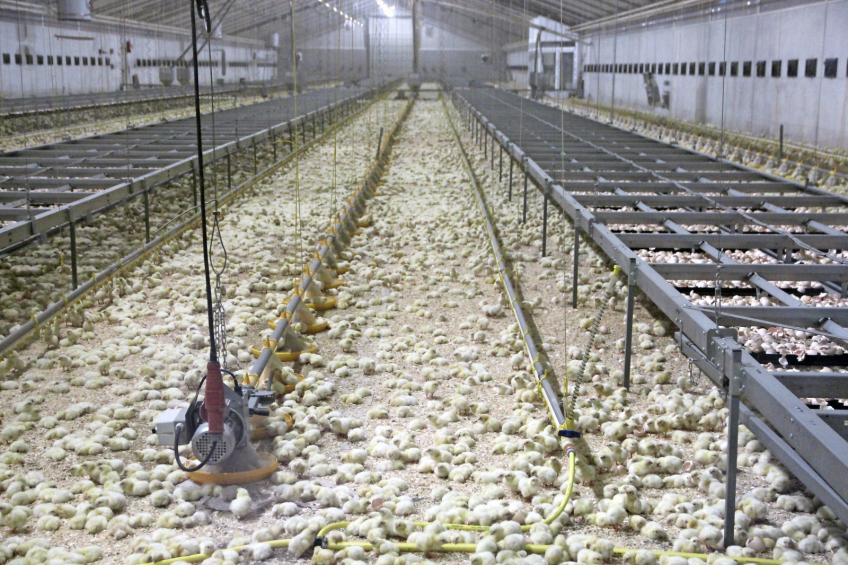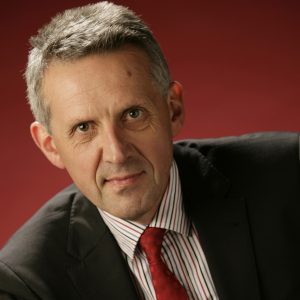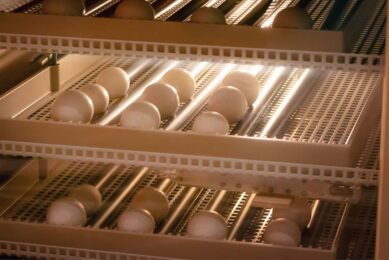Optimum Vita: the new road for poultry success

Hatching and growing on one location. That is the idea behind Optimum Vita, the broiler business of Klaas Knol in Germany. But not just that, Optimum Vita is also using energy very efficiently. Results so far have proved that his ideas are paying off. “Born for result”.
By Ad Bal
I was dreaming about a broiler business which would be completely different from regular models. And my dream came true. I took a completely new road into the unknown world.” This was the vision of Klaas Knol, Dutch broiler grower in Emlichheim, Germany. Indeed he took a completely new road and decided to set up his very special and unique broiler business: ‘Optimum Vita’, which literally means ‘The best life’.
“The idea I had in mind was to keep as much as possible in one hand and on one location,” says Knol. Actually a kind of small size family owned integration. The idea behind Optimum Vita was to create the best possible conditions for the chicks, to achieve their target weight well in time and at the lowest possible expense. With minimal medication and low mortality. According to Knol, to a large extent this lies in a uniform immunity status of the flock and creating similar gut health conditions all across the farm.
Eggs from one farm
Knol would have loved to also have the breeders on the same spot or nearby, but that is not the case (yet). However, the hatching eggs do come from one breeder farm in Eastern Germany. This farm is located in an area with hardly any other poultry farms in the vicinity. There, also rearing is done on the same location. Thus the breeders have an excellent health status, as well as the eggs which they produce. The breeder farm is quite far away from the Optimum Vita premises, but according to Knol, the transport time and expenses compensate for the high quality and immunity status of the hatching eggs.
Yet, however, currently he is in the process of setting up his own breeder farm, which will be closer to the Optimum Vita premises. Also this farm will be located in an area with a low poultry density.
Three stages
Optimum Vita exists of three stages on one location. The first one is the so-called ‘Pre Care’ or incubation stage. For this purpose, the farm owns two setters from HatchTech with a total capacity of 172,800 eggs. From here, the eggs are transferred at 17 days of incubation to the ‘High Care’ or hatching stage. This takes place in the preheated broiler house. The eggs have been put in trays which slide into a long winchable frame throughout the length of the house and which is positioned at about 30 cm above floor level. Once the chicks hatch at 20-21 days of incubation, they fall out of the tray onto the litter floor. Here, they have immediate access to feed and water in the house which is illuminated with LED lightning. The system is comparable to the Patio and X-treck early feeding systems of Vencomatic and the recently introduced Hatch Care system of HatchTech. Thus, chicks can make a head start without the handling stress of traditional incubation and hatching systems. Knol choose for Landmeco fan feeders from Denmark. In his view, these provide the best access for young the chicks to the starter feed. The nipple drinkers are from Val, without leakage cups. “There’s no need for,” says Knol. “These cups are unnecessarily hindering the chicks from accessing the nipples.”
Living area
After having been in the High Care house for nine days, the young birds will move to the third stage: the ‘Living’. For this purpose, there is a belt running through a tunnel underneath the floor between the houses from High Care to the Living. The chicks are carefully moved (chased) to this belt by means of a kind of fence. This must be done carefully and with much patience says Knol. “We must understand that the birds are unable to walk over a long distance.” For that reason, he will create another belt in the near future, enabling shorter walking distances for the birds.
The birds are kept up till slaughter in the Living area. All drinkers and feeders are fully winchable, allowing everything to be taken up for loading and crating the birds once they are taken to slaughter. Usually a first batch at a low slaughter weight is taken out early.
The Living area consists of four houses with a capacity of 55,000 birds each. Thus total growing capacity in the Living area is 220,000 birds. Permanently, three rounds are running concurrently and these are overlapping each other with an interval of 17/18 days (this is determined by the incubation or pre care stage). On an annual basis, Optimum Vita achieves 21 rounds, totalling a volume of 2.25 million birds to be taken to slaughter.
Klaas Knol: “I took a completely new road into the unknown world and my plan turned out very well.”
Body warmth
But that is not yet the full story. Knol also created a very energy efficient farm. Firstly, he uses the surplus energy of a nearby located biomass energy plant. But apart from that, he also uses the energy of the birds. It is a given fact that in the hatching stage, a temperature of over 36 degrees Celsius is needed. So the High Care section needs to be heated and for that reason energy from the nearby biomass plant is used. “But we also have energy at hand,” says Knol. “No one ever realises that the birds in the growout phase are producing heat, rather than that they need energy. For that reason we simply use the energy they produce for warming up the floor of the high care section. To achieve that goal, we are exchanging heat through a tubing system underneath the floor, similar to a floor heating system in a regular house. The energy these birds in the growout house (living) are producing is adapted through the floor by means of the tubing system. Then it is transported underneath the floor to the high care section. This is very efficient, energy and cost saving,” says Knol.
Bottom line beneficial
But does this beautiful idea pay? “Believe me it does,” says Knol. “Our calculations clearly indicate that Optimum Vita is beneficial. We have finished one and a half years of production now and we have found that we produce a stronger bird with a higher efficiency and low energy costs. And the results are very predictable and stable. Moreover we have an even and continuous workflow. But the overall labour expenses are higher and we always have birds in our houses. Those are disadvantages of course. Bottom line however, I can say that the new road I took was uncertain. But am glad I did and I would do it again. It unveiled a new way of thinking.”
[Source: World Poultry magazine, Vol 30 nr 7, 2014]
Join 31,000+ subscribers
Subscribe to our newsletter to stay updated about all the need-to-know content in the poultry sector, three times a week. Beheer
Beheer








 WP Admin
WP Admin  Bewerk bericht
Bewerk bericht